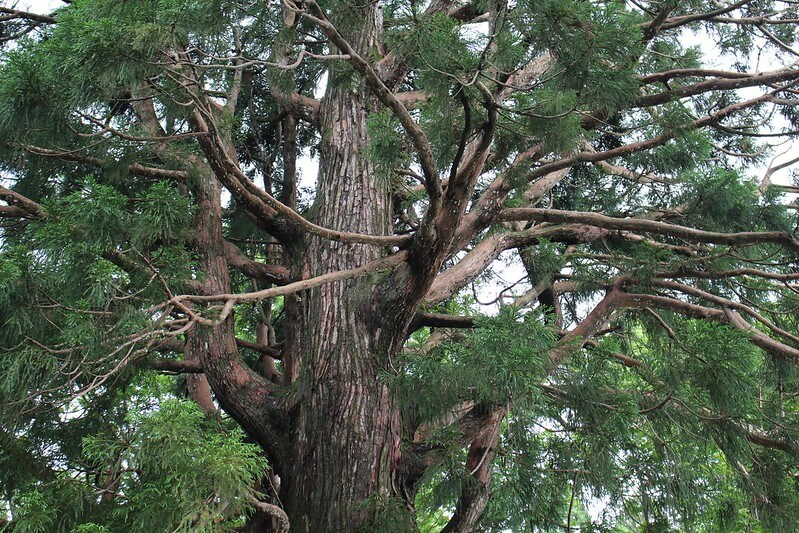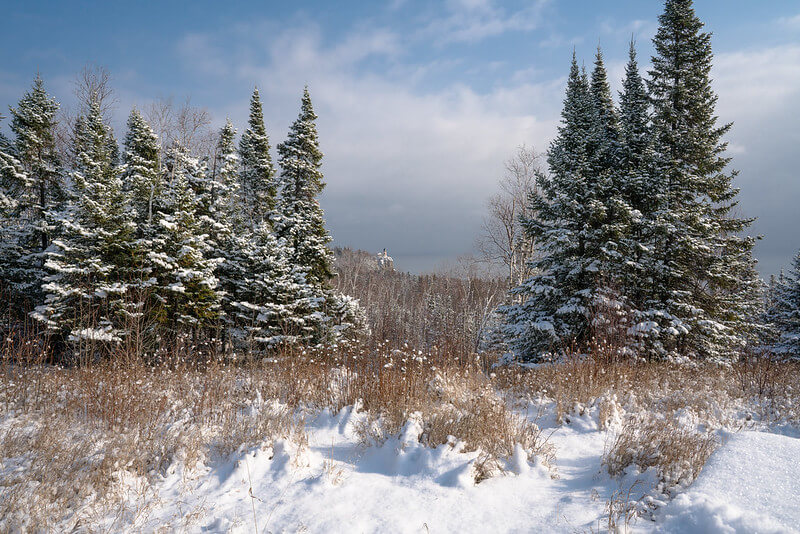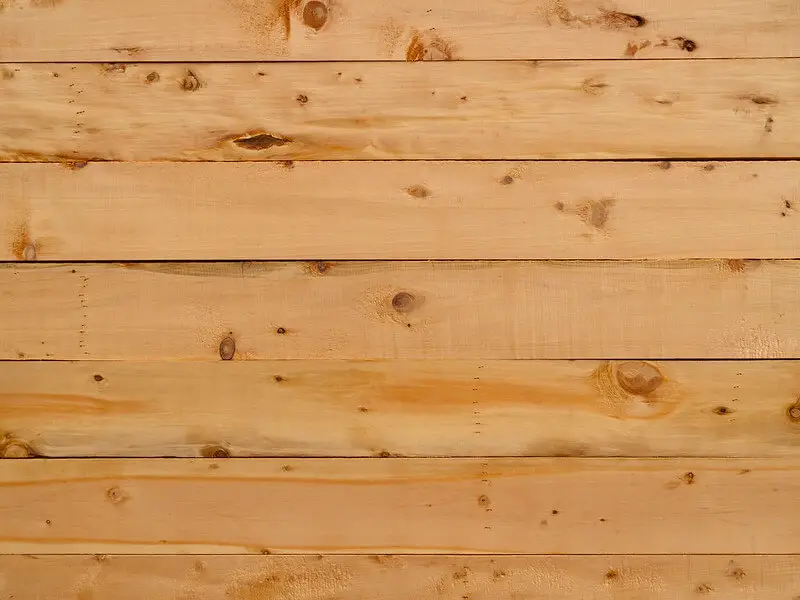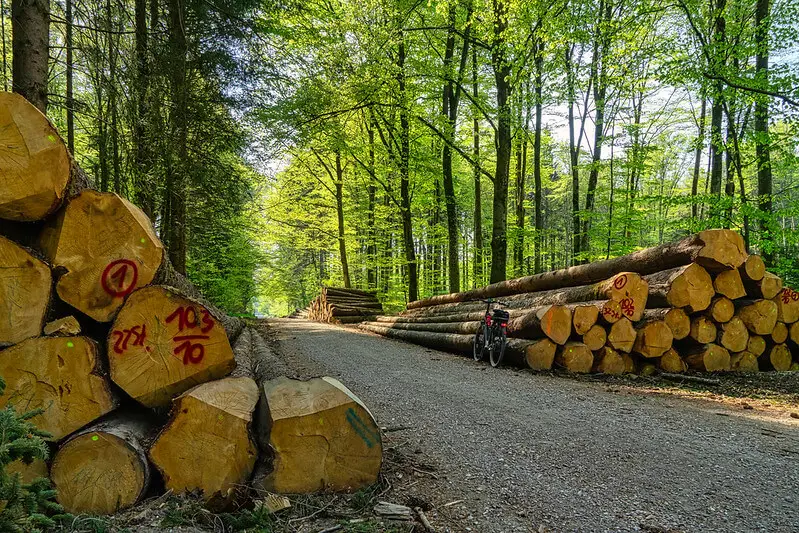Are you confused about whether to use cedar or pine for your next outdoor project? If so, then you came to the right place. In this article, you’ll get to read about the strength, durability, cost, and workability of both cedar and pine. By comparing their features you will be able to make an informed decision on which one suits your next project.
Recommended article: Best woods for fencing
Cedar vs Pine Comparison
| Aspect | Cedar | Pine |
|---|---|---|
| Appearance | Reddish-brown with visible grain patterns | Lighter color with pale yellow/light brown hue |
| Durability | Naturally resistant to rot, decay, and insects | Requires treatment or coating for improved resistance |
| Stability | Good dimensional stability, less prone to warping or swelling | Can be more susceptible to warping or splitting |
| Strength | Relatively lightweight yet offers good strength and stability | Reasonably strong, but may be less sturdy than cedar |
| Aromatic | Pleasant, distinctive aroma with natural insect repellent properties | Characteristic smell, varies based on species and resin |
| Cost | Generally more expensive, considered a premium wood | More affordable compared to cedar |
What is Cedar?

Cedars (Cedrus) are softwood species of trees, and there are 15 different types of cedar trees. They are famous for their color, durability, and scent. Cedars look similar to one another and only differ in color, hardness, and rot resistance. They are darker and their Colors range from purplish-red to coffee-brown. Cedars are useful in many ways, e.g. they produce a pleasant fragrance that repels insects and is used to make scented oils.
What is Pine?

Pines (Pinus) are softwoods that belong to the conifer family tree. Conifers can be termed cone-bearing seed plants. There are more than 100 species of pine trees and just like cedars, they are very similar and only differ in color, hardness, durability, and rot resistance. When well maintained, furniture made of pine can last for up to 30 years.
Colors in their species range from creamy-white to reddish tinge and get darker with age. They are mostly used to make interior furniture. Pine can be found locally in many countries, their common characteristic is its sharp needle-like leaves.
Cedar vs Pine Comparison
Cedar is the ultimate lumber for outdoor projects, here are a few reasons why;
What is the best wood for structural strength?
Wood has numerous properties. And while it’s important to look into all those properties, wood strength is the major concern for most woodworkers. This is because wood strength determines the mechanical performance of the finished piece. It also impacts its bending, drying, fastening, gluing, and machining.
Strength can be defined as the ability to resist stress-applied. The strength of wood is not only determined by the total load or stress the wood can resist. It is also determined by how much strain or deformation results from a given level of stress.
Wood is affected by different types of stress including compression, tensile, and shear stress. A test conducted by the American Society for Testing and Materials (ASTM) reveals that cedar can resist the listed types of stress better than pine.
At 12% Moisture Content, the Alaskan Cedar has a maximum crushing strength of 6,310 psi. on the other hand, the eastern pine has a maximum crushing strength of 4,800 psi. If you’re looking to make a strong piece, then you should consider using cedar wood.
Durability
Water is the leading natural element that affects the durability of wood. It causes shrinking, swelling, warping, and discoloration. Sometimes it even causes gluing failures.

Various types of pine including the jack, lodgepole, and southern pine have a higher tendency of shrinking and warping when they come into contact with water. On the other hand, cedar can withstand outdoor elements such as moisture. Cedar is drier than pressure-treated pine, this makes it suitable for hot conditions.
Cedar is one of the heartwood extractives that are naturally resistant to decay. On the contrary, pine has low level of decay resistance and is more prone to insect attack.
Cost
A board foot of pine retails at around $2.33, while that of Eastern red cedar retails at $6.29. The western red cedar can cost up to $14.00 per board foot.
There are a few reasons that make cedar more expensive than pine. It is stronger and more durable compared to pine. Besides being rare, cedar has beautiful properties such as its color and grain pattern. Pine is readily available in most regions and is, therefore, cheaper than cedar.
If you want either of the woods and you’re having trouble finding them start by:
- Recycling used wood.
- Checking local sawmills, lumber yards, or asking lumber men.
- Searching on the internet, magazines yellow pages, or other listings.
Workability
Cedar has excellent workability; it works well with both hand tools and machines. It has a high holding capacity for nails and screws. Cedar can bend well without breaking, and it glues together perfectly.
Pine can easily be trimmed and molded without breaking. It also has a good holding capacity for nails, screws, and glue. The workability of pine is lower compared to that of cedar. This is because pine contains resin that can clog blades. The resin also makes it difficult to sand a pine surface.

While softwoods are relatively easy to work with, knots can make your work more difficult. They not only affect the workability of wood; but also affect its strength. For instance, a spike knot extending across a board may cause the board to break under small loads.
Cedar’s resistance to natural elements makes it suitable for outdoor projects. It is also used to make indoor furniture like musical instruments and wardrobes. Pine is more sensitive to outdoor weather; it is more suited for indoor projects. It can be used for making drawers and cabinets. Pine is not limited to indoor use; it can be pressure-treated and used to make fences.
Finishing
While cedar is naturally resistant to decay, applying a finish can help to prevent deterioration. You can stain or polish cedar wood without much trouble.
Finishing pine using stains is challenging. Some of its species including the Eastern white pine and the Southern yellow pine have uneven grains. The grains absorb stain unevenly causing the wood surface to appear blotchy. Another challenge is that pine is not fully penetrable.
Paint is also another alternative for finishing pieces made of pine. However, the resin in pine can affect a painted surface. In some cases, the resin bleeds through paint films resulting in a yellowish speckling on painted surfaces.
Maintenance
Cedar has less maintenance required since it can withstand natural elements. It also has natural anti-bacterial properties and is a great choice for outdoor furniture. Though strong, cedar-made furniture also requires basic care such as regular washing.
Pine is more demanding when it comes to maintenance. Outdoor elements such as moisture cause it to shrink and warp. As such, pine must be pressure-treated if it is to serve you for long. Pine also has a low level of decay and is more prone to insect attack. For protection, it needs preventative treatment. Applying finish on pine helps to;
- Protect it from dirt and water.
- Extend the woods’ life.
- Protect it from UV rays that cause fading.
A Summary: Cedar Vs Pine
While pine and cedar are both softwoods, they have different characteristics. Cedar is stronger, durable, has great workability, and requires less maintenance. Although costly, it is an excellent option for outdoor projects since it can withstand natural elements.
Pine is more sensitive to outdoor conditions and can only work well when pressure-treated. It has a relatively good workability and finishes well. It is more prone to insect attacks and thus requires preventative treatment before use. Pine is readily available in most areas and hence very affordable. Although pine can be used to make fences, it’s more suitable for indoor projects.

